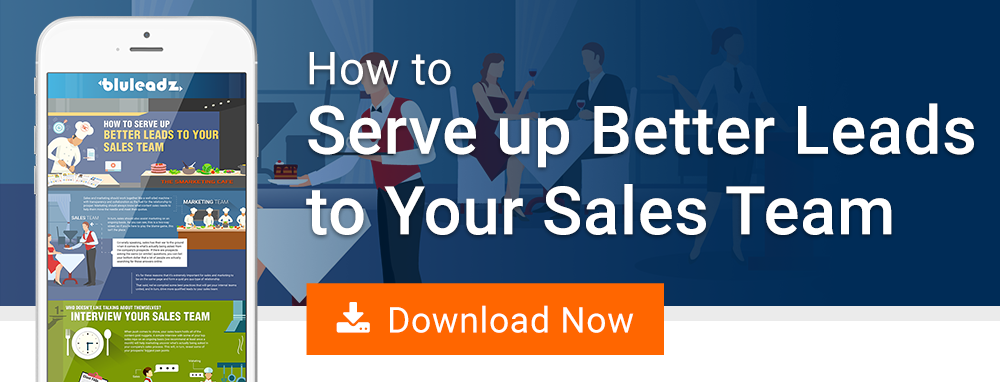Many businesses survive on the lifeblood of new leads. If you truly want to grow, you must keep the clients you have while adding new ones on a regular basis. You might feel unsure about where to start, though. Perhaps you’ve tried gaining leads in the past and not had much success.
Research indicates 80 percent of new leads don’t result in sales for companies. Growing the number of leads is simple, but you must also focus on your sales funnel once they enter the buyer’s journey. Even if only 20 percent of your new connections convert, you can see a decent return on money spent. Be aware of your averages.
No matter what type of business you own, the process of growing leads looks similar. The difference is in the messaging and how well you entice them to go from lead to customer. Here are the key points to keep in mind as you grow revenue.
6 Ways to Improve Your Lead Generation
1. Know Your Target Audience.
In order to find new leads, you must understand who you’re targeting and why. Think about your current customers and what they have in common. Do a deep dive into your database and analyze their demographics and psychographics.
Think about the pain points your audience faces. What is the problem driving them to seek your solution? Are there any emotions behind the issue? For example, someone looking for a new security system may want to keep their family safe. The emotions driving them are love and fear.
Once you have an idea of what your typical customer is like, go ahead and make a buyer persona. All your advertising and marketing efforts must zone in on your persona and reach them on an emotional level.
2. Understand Your Average Contract Value (ACV).
Make sure you know how much the average new lead is worth. The ACV helps you know how much to spend and get a decent return on investment (ROI). If a new customer spends $3,000 on services in a year, then they are worth $3,000 to you.
You want to make sure the amount you spend on leads balances out. Not every lead becomes a customer. If one out of 10 leads signs up, you might spend $30 a lead or $300 to make $3,000. What is your threshold for ROI?
Track your advertising carefully to ensure you aren’t just throwing marketing money away without seeing results. Know your ROI and how much budget you have for marketing.
3. Optimize Your Webpages.
Your website should focus solely on the goal of converting visitors into customers. When a new lead lands on your website, they should be funneled to a specific page. Limit the elements to only those things needed to make a decision.
Understand where in the buyer’s journey the person might be, so you can give them information or entice them with an offer. Make the page as easy to navigate as possible. Remove anything not related to the topic at hand.
4. Add Calls to Action (CTAs).
How well is your CTA converting? Many different factors impact whether people click on your CTA button.
Look at whether the color pops on the page. Does it contrast with the background or fade into it? Look at the language on your button. You should use action words, such as “get my free book” or “start my free trial.”
Try different options and conduct split testing to see which ones perform best with your target audience. Make tweaks until you’re happy with your conversion rate.
5. Focus on Digital.
In a report by McKinsey, researchers estimated the pandemic and people staying at home pushed consumer online buying behavior ahead by five years or more. Finding leads online may be easier than ever before.
Utilize social media posts, shares, and advertising to drive new people to your sales funnel. Fortunately, ads on sites such as Facebook and Instagram are highly targeted. You’ll reach the exact audience you want with the right message at the right time.
Leads gained from digital advertising tend to be well-qualified and much more likely to become customers. You can further narrow the selection by location or interests.
6. Use Influencers.
People are much more likely to trust the recommendation of others than what you say about your own brand. Most new customers look at online reviews before making a decision to purchase form a business new to them.
Influencers are your secret weapon in driving new leads to your site. They can recommend your company and share their own experience using your product or service. Don’t rule out micro influencers with smaller but highly targeted fans.
You want an influencer who already ran a few successful campaigns with other brands. Pay attention to how engaged their audience is. Do people share, comment and like their social media posts? Pay attention to whether they comment they ordered an item after the influencer’s recommendation.
Pay attention to ROI. Is the influencer sending new leads your way? Create a dedicated page for only the influencer campaign so you can easily track how well the attempt works.
Experiment With Lead Generation Strategies
Figuring out what works with your target audience requires a bit of trial and error. If one thing doesn’t work to bring in new site visitors, try something else. If people come to your site but don’t convert, change your landing pages or your target audience specifications.
Keep working on your method until you get the ROI you seek. It takes time to grow your business, but you should gain steady leads along the way.


Eleanor Hecks
Eleanor Hecks is editor-in-chief at Designerly Magazine. She was the creative director at a prominent digital marketing agency prior to becoming a full-time freelance designer. Eleanor lives in Philadelphia with her husband and pup, Bear.